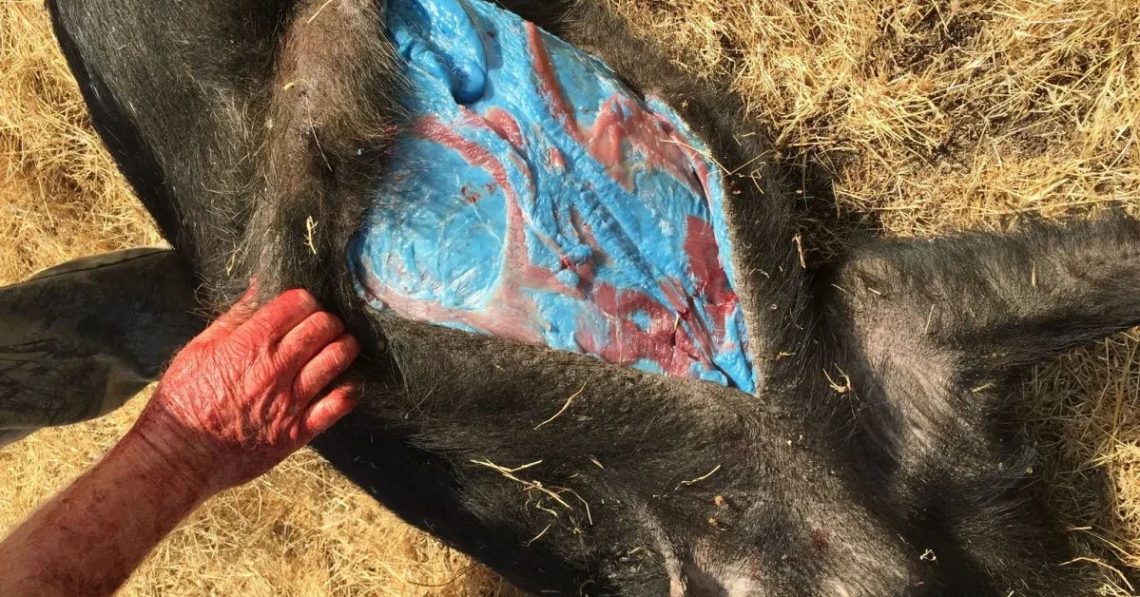Somewhere in Monterey County, California, wild pigs’ insides are turning the kind of electric raspberry blue we generally find appetizing when it’s found in, say, a gummy worm or a Slurpee. It’s all because local pigs have been eating rat poison.
According to the Los Angeles Times, wildlife control expert Dan Burton first noticed something off in March when he was processing pigs trapped near Salinas. Their muscle and fat weren’t pink or white; they were neon blue, as if someone had been feeding them Cool Blue Gatorade, aka the best Gatorade (lemon-lime deserves a shout-out).
Burton alerted the California Department of Fish and Wildlife, or CDFW, which ran tests confirming the animals had ingested diphacinone, a common rodenticide used by farmers to keep squirrel and rat populations in check.
Wild Pigs in California Are Showing Up Neon Blue and Scientists Know Why
Diphacinone is often mixed into grain bait dyed a bright blue as a visual cue warning humans not to eat it. Unfortunately, pigs can’t read warning labels, and they’ve been eating from these bait stations. The poison isn’t potent enough to kill 200-pound hogs immediately, but prolonged exposure builds up in their systems. It’s not just turning their tissue blue; it’s making their meat toxic.
The CDFW says the pigs are either directly eating the bait or scavenging other poisoned animals. While some show visible signs of contamination, like the surreal blue muscle tissue, others may look completely normal but still carry trace amounts of poison in their organs.
A 2018 study found rodenticide residue in more than eight percent of wild pigs near human-controlled environments. And even cooking the meat doesn’t destroy the toxin. If eaten, it can lead to rodenticide poisoning symptoms in humans, like lethargy and internal bleeding.
California enacted more onerous restrictions in 2024, banning most uses of diphacinone outside of certified pest control operations. But the damage may already be done. Pigs are now actively seeking out bait stations, and exposure could spread, especially in rural communities where wild game is hunted for food.
The post Wild Pigs Are Turning Neon Blue in California—Here’s Why appeared first on VICE.




